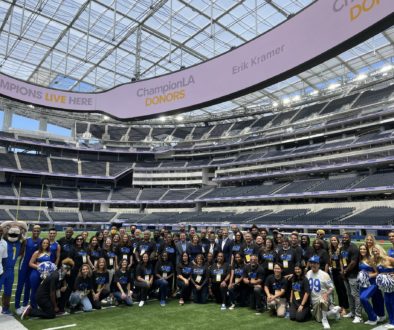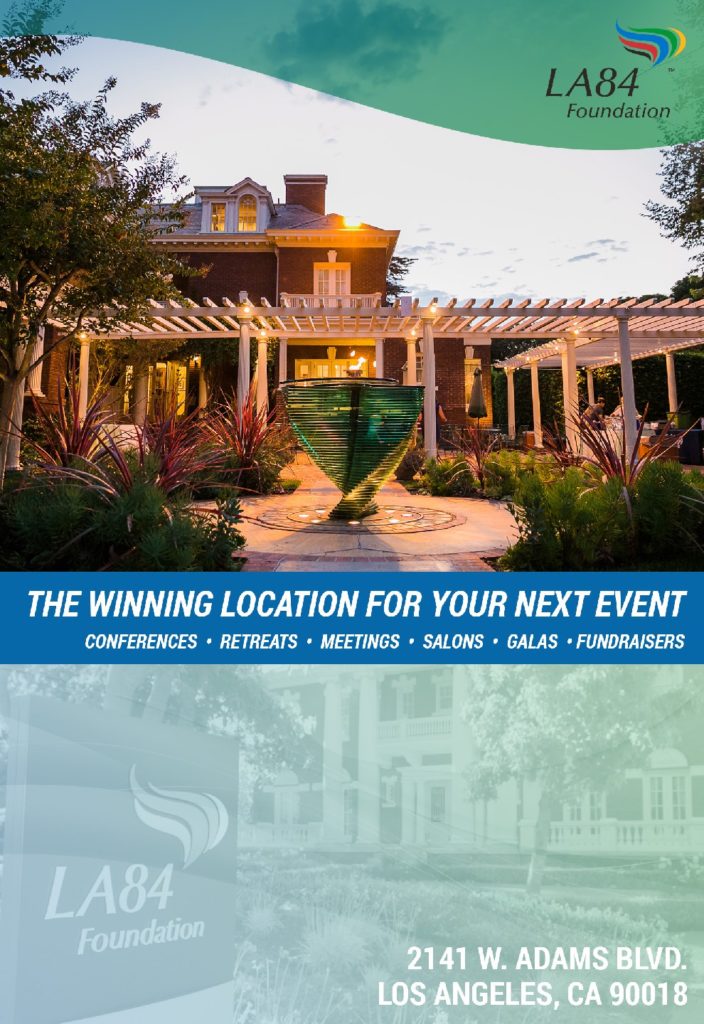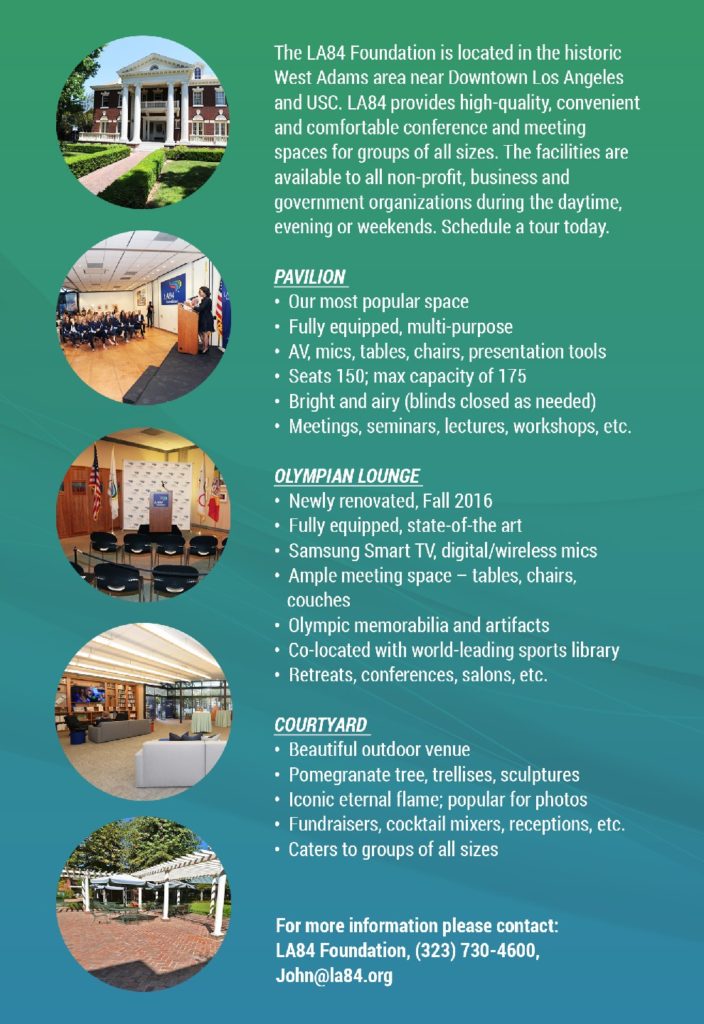2017 LA84 Summit Recap – Professional Sports: Beyond Photo Opp Philanthropy
By Vaneshia Reed
Panelists
Jon Joaquin, Director of Youth Baseball Development, Philadelphia Phillies
Kimberley Layton, Vice President – External Affairs, Los Angeles Chargers
Joanne Pasternack, Vice President, Community Relations & Executive Director, Warriors Community Foundation – Golden State Warriors
Diane Terrell, Executive Director, The Grizzlies Foundation
Interviewer: Martha Saucedo, Executive Vice President, External Affairs, AEG
Over the last decade, the sports nonprofit world has seen a shift towards outcomes-based philanthropy. Sports organizations are moving beyond merely funding community organizations and are becoming more involved in working with these organizations to maximize community impact. In this breakout session, four panelists discussed their organization’s shift towards outcome-based philanthropy, challenges with partnering with community organizations, and suggestions for organizations seeking their support.
READ MORE: LA84, 400+ Attendees Celebrate Play For All Movement At 2017 LA84 Foundation Summit
Reducing the ‘Pay-to-Play’ Gap
A common outcome for all panelists was to minimize the ‘pay-to-play’ equity gap and ensure that all youth have access to play sports no matter where they live.
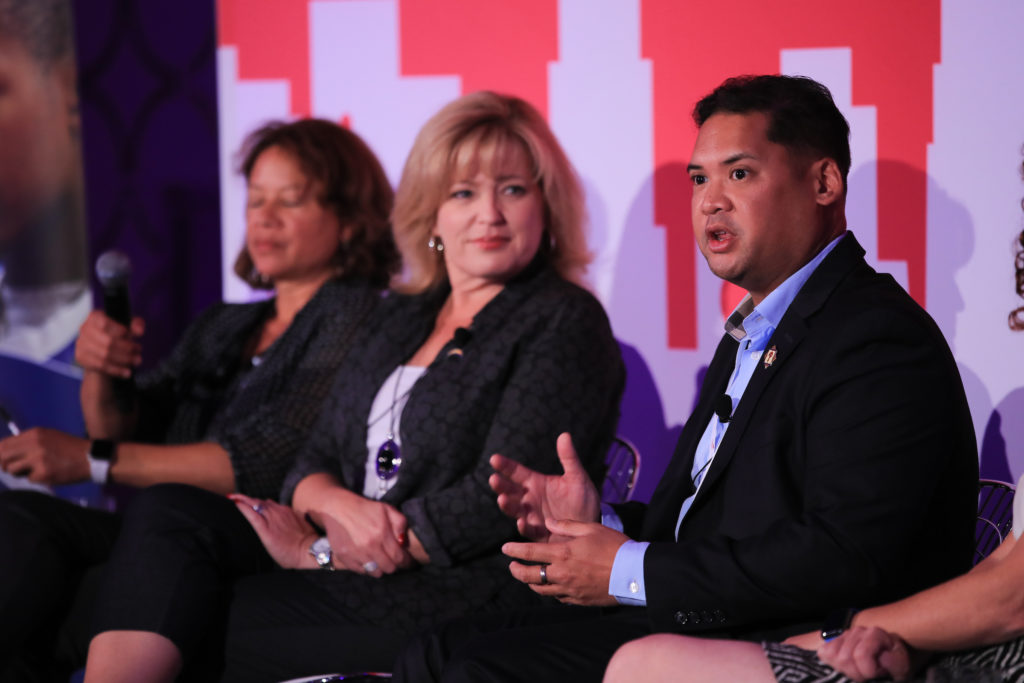
For Layton, the focus is ensuring that all kids, regardless of what neighborhood they live in, have the same kind of equipment that they could use for health and fitness, while Joaquin acknowledged Philadelphia’s struggle with obesity and lack of nutrition while hammering home the importance of enabling kids to have access to expensive sports, like baseball by, buying them gloves as an example.
In Oakland, Pasternack focuses on education inequities and lack of resources, and seeks organizations the Warriors Community Foundation can align with to reach the largest numbers of small groups.
Building Organizational Capacity
While the philanthropic landscape has shifted towards an outcomes-based model, the reality is that community partners don’t always have enough resources, such as funding and personnel, to respond to this new model. Terrell admitted that the Grizzlies Foundation must “do an awful lot of rolling up our sleeves and working alongside community partners” to get their Memphis community from where they are to where they to where they need to be. Recognizing that it is a work in progress, Terrell expressed a sincere commitment to make sure that their funded partners succeed.
READ MORE: 2017 LA84 Summit Recap – Bridging the Divide: Corporate Brands Impacting Youth Sports and Play
Pasternack expressed the need to enhance support of community based organizations without making them dependent on funds that may not always be available. “Be purposeful in the approach,” Pasternack added. “What does the local market need and what are the greatest areas of opportunity? Which organizations can be vetted out and which could we align with to reach the largest number of small organizations?”
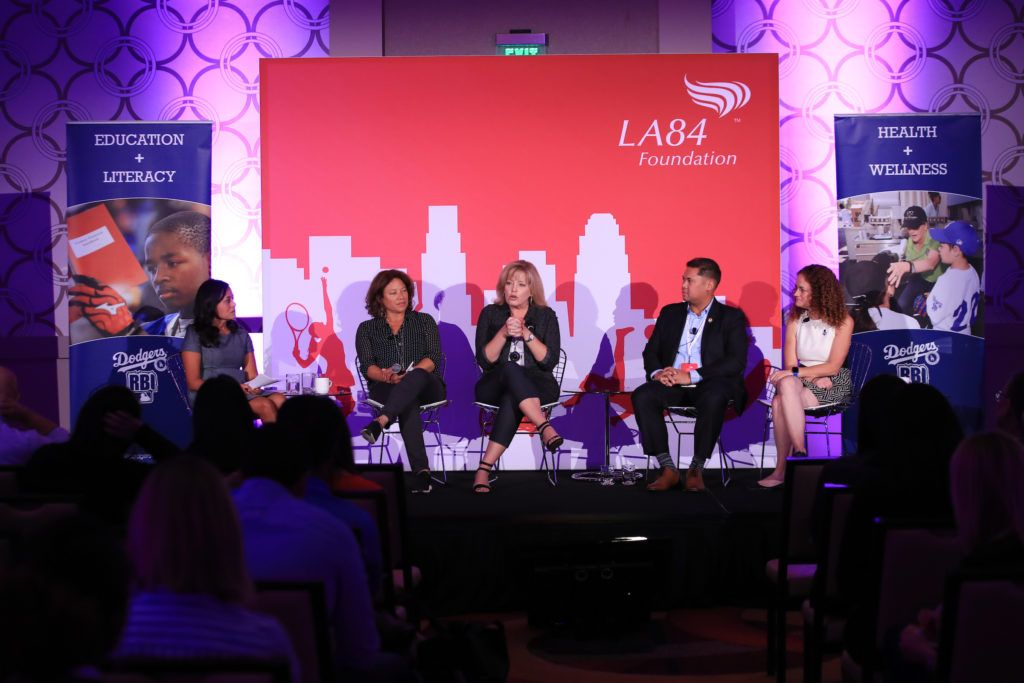
Philanthropy is Not a Checkbook
All panelists expressed a desire to partner with organizations that go beyond solely requesting monetary support, and that recognize a corporation’s ability to provide numerous other kinds of support. Layton hopes that organizations can understand, for example, the power of the professional sports team brand to bring awareness to and help expand a program. Said Layton:
“I have so much more ability to partner with you significantly and raise the level of something that works for the both of us together than I ever have the ability to write a check.”
Added Saucedo: “If we’re not a good fit, don’t force it. I might be able to form a connection with another organization. Find people that will be natural partners… and move your mission forward.”
Suggestions for Nonprofit Organizations
The panelists offered great advice for community organizations seeking support from philanthropic organizations.
- Know the organizational WHY: Do your research and know what the organization is all about
- Ensure that your organization’s passion points align with the organization
- Think about what an organization has to offer beyond funds
- Know what you have to offer. Think about how your organization can be a good partner to the brand that supports you
- Brand your social media: Let organizations know what is going on
- Follow up with your partners with handwritten notes and pictures
- Be honest. Be yourself
- Most importantly, remember that these organizations want you to succeed
“When you succeed, we succeed and it’s the best thing possible for the community” – Layton.
